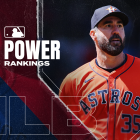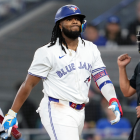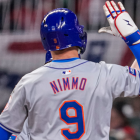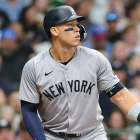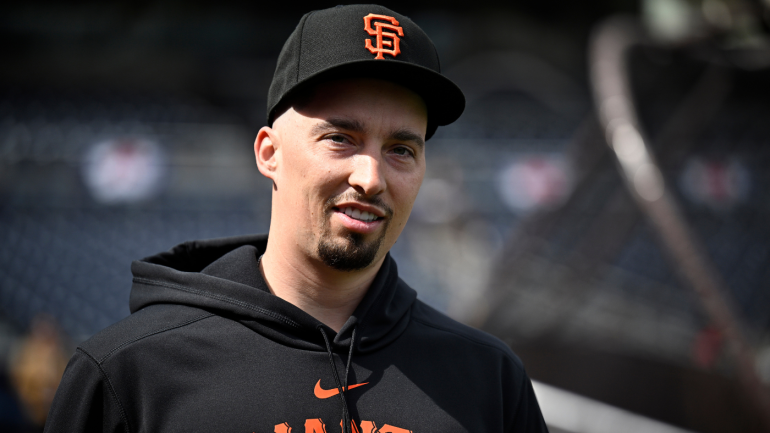
The beginning of a new Major League Baseball season means the official end of the offseason -- and of paying more attention to what's happening off the field than on it. In general, we prefer to put a bow on offseason coverage before Opening Day. Yet the uneven flow of this particular winter means that we didn't have the chance. Blame it on the uncertainty surrounding local broadcast contracts, or the prolonged waiting games that surrounded both Shohei Ohtani and Yoshinobu Yamamoto -- the pace was downright dreadful at times.
Nevertheless, we here at CBS Sports wanted to highlight some potential contractual trends that emerged this winter before we get too far into the regular-season schedule. We write "potential trends" because you can only learn so much from a single offseason. There are too many variables at play, including the quality of the free-agent class and the motivations of the league's usual high rollers, to draw failsafe long-term conclusions. Still, that doesn't mean that examining the marketplace with a wide lens is pointless. At minimum, it gets you thinking.
Take, for example, the plight of agent Scott Boras. If you've spent any time on social media, you've likely seen people stating that he had a disappointing offseason -- particularly with respect to the so-called Boras Four, a group that included the reigning National League Cy Young Award winner and a former MVP. Boras, for his part, shrugged off that criticism by suggesting that he knew coming into the offseason how the market would treat his players.
"I don't think their predictions included what we were fully aware of," Boras told the Los Angeles Times about early winter contract projections, "and that is, clubs were going to come to us and say, 'We're not going to look at length with premium AAVs because of what preceded their performance prior to 2023."
How Boras responded to those expectations happens to be one of the three trends we've highlighted below. What do these trends mean for next year's free-agent class, which includes Juan Soto, Alex Bregman, and Corbin Burnes? Possibly nothing. Scroll slowly with us as we break down that and two others worth knowing.
1. Welcome to the Deferred Era
If you've paid attention to the Dodgers' recent offseasons, then you've likely noticed the prevalence of deferred payments. Nearly all of Shohei Ohtani's historic $700 million pact is deferred ($680 million) until after it expires, along with more than $100 million of Mookie Betts' deal and nearly $60 million of Freddie Freeman's contract. The Dodgers even deferred $8.5 million of Teoscar Hernández's one-year, $23.5 million agreement.
Why are the Dodgers so eager to defer money -- a tactic that, for a while, turned the New York Mets into a punchline with respect to their annual payments to Bobby Bonilla? It has to do with the time value of money and how deferred payments figure into the luxury tax.
Anyone who has spent time in a business class knows two things: 1) they're an incredible waste of time, and 2) a dollar received today is worth more than a dollar received tomorrow. There are a few reasons for that second part, but it largely boils down to the opportunity cost: you can't spend or invest a dollar that you won't receive until some distant future date. That's why interest and discount rates exist -- to help form a better idea of an amount's present value. And the present value is particularly important to MLB teams when it comes to the luxury tax.
Take Ohtani's contract as an example. All the headlines suggested he signed for 10 years and $700 million. If Ohtani's contract were structured in a straight-up manner, his competitive balance tax salary would be $70 million, since it's based on the player's average annual value. Yet the deferred payments reduced the present value by hundreds of millions of dollars. Therefore, Ohtani doesn't count as $70 million against the Dodgers' luxury tax calculations -- he counts for a far more manageable figure of less than $50 million.
You may wonder if there's a capped amount or percentage that teams can defer. Flip to Article XVI of the 2022-26 Collective Bargaining Agreement and you'll note "there shall be no limitations on either the amount of deferred compensation or the percentage of total compensation attributable to deferred compensation for which a Uniform Player's Contract may provide." In non-legalese words: teams are free to defer as much money as they want, provided the player goes along with it during negotiations.
What are the incentives for either side? If you're the Dodgers, or another team reliably spending into the luxury tax, you can leverage deferrals to create wiggle room. If you're a player, you're getting a more impressive total contract value -- even if the present-day value and year-by-year payout pales in comparison. If you're a player like Ohtani, who is estimated to clear $40 million-plus in endorsements each year, the material difference to you is trifling. If the team, suddenly gifted with the aforementioned wiggle room, spends more to beef up the roster, that should theoretically benefit the player too.
There's also, let's face it, the ego dynamic in professional sports. It's way more rad to have your contract be presented as being worth $700 million than being worth $460 million.
Interestingly, we'll conclude this section by highlighting two other tricks the Dodgers have used with deferred money. The first being that they deferred $57 million in Freeman's contract without interest. The second being that they included a clause in Betts' contract that eliminates the deferrals and stipulates that "salary is paid as earned" if he's traded. Both of those tidbits come courtesy of the invaluable Cot's Contracts website hosted at Baseball Prospectus.
2. The Super Long Contract trend may have been overstated
It's funny how quickly marketplace perceptions can change on a year-to-year basis. The 2022-23 offseason looked to be the genesis of the super long-term deal. Trea Turner and Xander Bogaerts both signed 11-year pacts; Aaron Judge received nine; Brandon Nimmo eight; and even Dansby Swanson inked a contract that covered seven seasons.
The thinking was that teams would continue to smooth their tax hits by giving longer-than-usual agreements at the top of the market. A year later … well, so much for that.
The only players who received more than eight years were the Dodgers' super duo of Ohtani and Yoshinobu Yamamoto. (Based on the Dodgers' recent 10-year extension with Will Smith, it's probably fair to think of them as a club that will continue to use term to combat their CBT pinch.) Aaron Nola signed a seven-year deal that served as a pseudo-extension with the Phillies and Jung Hoo Lee grabbed a sixer from the Giants. Otherwise? Nothing more than five years.
Put another way, the median length of the 10 richest contracts (as judged by AAV) signed during the 2022-23 offseason was six years; the median length of the 10 richest signed during the 2023-24 offseason was three years.
As we noted in the introduction, rushing to judgment after one offseason is rarely a good idea because of the differences in circumstances -- be it the quality of free-agent class, the financial state (think: the uncertainty surrounding several teams' local television deals); and so on. It'll be interesting, then, to see how teams treat contract length moving forward.
For teams wanting to avoid the tax or steeper tax penalties, it still makes sense to give out more years than a higher AAV -- see the Padres' five-year agreements with Wandy Peralta and Yuki Matsui, two players who (and we mean no disrespect by this) do not fit the usual parameters for long-term free-agent deals. For everyone else, their owners would probably jump for joy if they never handed out another market-value contract longer than five years. That's because contracts are mostly guaranteed in MLB, and every additional season tacked on to an agreement brings with it more risk of injury or performance decline.
How do players and agents combat that predilection? In some cases, they let the market do what the market does -- force teams to pay in term and dollar if they want a seat at the table. In other cases, they intentionally seek a shorter deal with a thicker AAV. That sets up a player to earn more money over the long run, albeit with the risk that their dreams are derailed by a poor season or bad injury. There's also a bit of a hybrid approach that you saw Boras clients take late in the winter, negating some of that risk by loading deals up with opt-out chances.
Do you hear that? It sounds like a convenient segue.
3. Boras escalating the opt-out game
Again, there's no glory to be found in rushing to make long-term conclusions after a single winter. We do think it's notable that so many of the biggest contracts contained opt-out clauses or options -- something that was not true the previous offseason.
To wit, just two of the 10 richest contracts (as judged by AAV) signed during the 2022-23 offseason had an option or opt-out clause -- and one of those was a club option. This past offseason saw seven of the top 10 contracts contain some kind of option or opt-out provision.
We referenced Boras in the previous subheading. Now let's use him as an example to illustrate how popular opt-out clauses were this winter.
Each of the five richest contracts signed by Boras' clients contained an option of some sorts. That includes all members of the so-called Boras Four -- Blake Snell, Jordan Montgomery, Cody Bellinger, and Matt Chapman. Each of those four players can re-enter the market next offseason if they so desire -- or, if they have a lousy year for whatever reason, they can remain in place for at least another season. (Do note that Montgomery must make 10 starts for his player option to vest.) The calculus is a little tougher for Bellinger and Chapman, both of whom signed three-year pacts with opt-out possibilities after each of the first two seasons.
Even downstream Boras clients, like Sean Manaea and Nick Martinez, can hit the eject button after this season if Boras determines they have more favorable markets awaiting them.
Now, those players would almost certainly prefer the security that comes with a three-plus-year contract -- humans crave comfort, and after some unknowable point, what's another few million here or there anyway? But, if the market isn't handing out terms like it used to -- and given that this wasn't a Boras-exclusive trend, that seems reasonable to say about this offseason -- then Boras' approach makes a good deal of sense, even if it takes longer to reap the reward than the traditional model.
All figures presented in this piece are from MLB Trade Rumors' contract database and/or Cot's Contracts.














